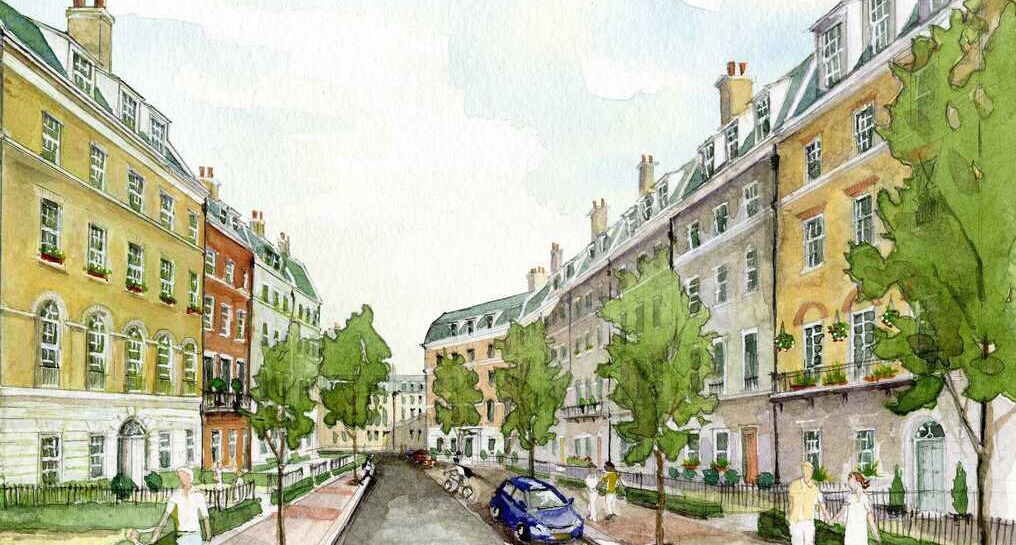I have to admit to being especially excited by a policy paper released today, but then if I’m honest it’s been a quiet few months and my social life isn’t what it once was.
But if you think about its implications, you might be excited too.
Imagine that we could solve the housing crisis, make home ownership affordable for young people again, create lots of jobs, increase GDP by a couple of percentage points, make our cities more beautiful, liveable and greener — and do all this without building on a single square foot of green belt land? Such a thing is made possible by the Policy Exchange paper, “Strong Suburbs”, by Ben Southwood and Samuel Hughes.
It contains an ingenious proposal: in suburban streets where the housing is less than 100 years old, residents would be allowed to hold votes to turn one or two storey houses into dense Bloomsbury-style terraces.
The housing crisis is a classic tragedy of the commons; most people don’t want housing near them because it reduces the value of their homes. They enjoy none of the benefits of new developments, and all of the downsides.
But NIMBYism is also driven by the “design disconnect” between what planning authorities and the public, i.e. people reasonably fear newbuilds that are ugly or wildly out of place. This is again an incentives problem: the cost of a building is entirely borne by the owner but the external costs of its aesthetics are carried by everyone who lives nearby.
If you look at the most sought-after areas of London or Edinburgh, they mostly have one thing in common — they were designed by men who owned the whole neighbourhood. It added to their wider estate’s value if each individual property was beautiful, and fit its surroundings. This is not the case with developers today.
The genius of street votes is that the the neighbourhood design is decided by the street collectively, so incorporating all the best aspects of “the Great Estates”, but carried out democratically rather than by Victorian plutocrats.
Street votes therefore incentivise beautiful architecture, because if I’m designing my own house, its external aesthetics are going to be just one of many factors I consider, while if I’m designing my neighbour’s house it will be a much bigger issue. The authors hope that as many as two million extra houses could be built as a result.
This is far more important than headline-grabbing debates about the “war on woke” or university free speech. High housing costs are an existential crisis. There is undeniable evidence that they prevent thousands of people from starting or extending families, and also push people politically to the radical Left (and can you blame them?).
When the virus is defeated we will want to reward the young people who have sacrificed one of the best years of their lives for a disease that is far more likely to kill older homeowners. And there is nothing they’d like more than the chance to own their own home.











Join the discussion
Join like minded readers that support our journalism by becoming a paid subscriber
To join the discussion in the comments, become a paid subscriber.
Join like minded readers that support our journalism, read unlimited articles and enjoy other subscriber-only benefits.
Subscribe